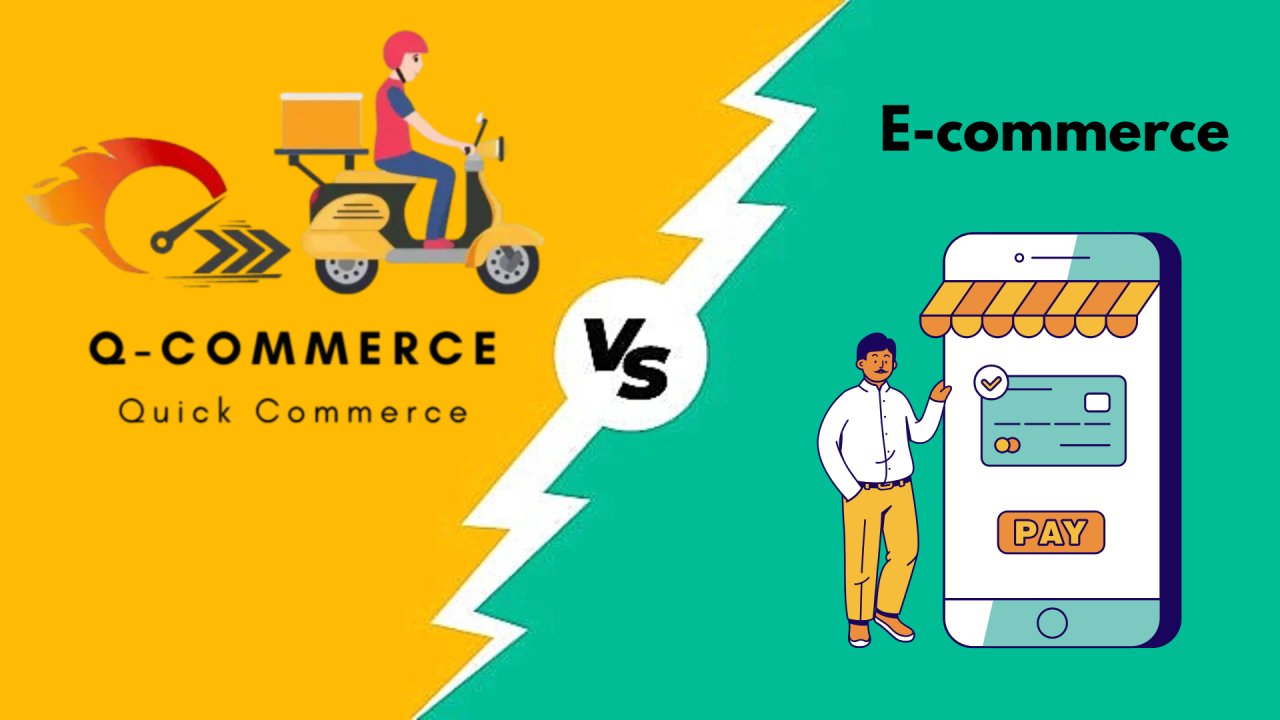
A new battle has begun between Quick Commerce vs E-Commerce – fast delivery versus affordable prices. The question now is, who will dominate the Indian market by 2025? And how will this clash impact small businesses and local shopkeepers?
In this article, we will look into their business models, a brief comparison, strengths, weaknesses, and how consumers and small businesses can strategize to keep up with this evolving environment.
What is Quick Commerce?
Quick Commerce, also known as “online shopping on steroids”, is about delivering groceries, snacks, and medicines — essentials — in 10 to 30 minutes. Companies such as Blinkit, Zepto, and Swiggy Instamart utilize small warehouses (called “dark stores”) placed at key locations to ensure these speedy deliveries in a finite radius.
Major Features of Quick Commerce:
- Speed: Minutes to delivery.
- Narrow product basket: Mainly sold essentials such as flour, pulses, rice and snacks.
- Designed for User convenience – to solve your problem instantly or be ready for any unexpected purchases.”
Initially sceptical of the Quick Commerce model, it gained popularity during the COVID-19 pandemic and due to technological advancement in logistics. Now, services such as Blinkit and Zepto also bring higher-value items, such as electronics, cakes and even jerseys, in hours.
What is E-Commerce?
On the flip side, there is E-Commerce, which is an old and tried model having giants like Amazon and Flipkart where a significant number of products are available in the area of electronics, fashion, groceries, books, etc. E-Commerce capitalizes on selection and low prices, frequently leveraging extensive warehouses and regional supply chains to deliver orders in 1–5 days.
Key Features of E-Commerce:
- Wide selection of products: Basket spans basic needs to niche high-end items.
- Competitive pricing: Price cuts and specials woo budget-conscious consumers.
- Standard delivery: Usually 1 to 5 days, but may be faster for a fee.
As per a report by Instamojo, India’s e-commerce market is expected to surpass $300 billion by 2030, driven by increasing internet penetration and consumer behavior shifts.
E-Commerce has been at the heart of online shopping since the early 2000s and reinvented the way Indian customers spend their money on consumer goods from household items, apparel to electronics.
Quick Commerce vs E-Commerce: A Detailed Comparison
| Aspect | Quick Commerce | E-Commerce |
| Speed of Delivery | 10-30 minutes | 1-5 days |
| Product Range | Limited to essentials | Extensive variety |
| Pricing | Higher due to convenience | Competitive, with discounts |
| Logistics | Dark stores, small radius | Large warehouses, national reach |
| Target Audience | Urban, time-sensitive users | Broader demographic |
Business Models: How Do They Make Money?
E-Commerce:
- Bulk purchases: Buying goods in bulk at lower costs.
- Marketplace model: Allowing third-party sellers to list products, earning commissions.
- Advertising: Charging sellers for visibility on their platforms.
Quick Commerce:
- Dark stores: Stocking fast-moving goods close to the customer.
- Premium pricing: Charging slightly higher for speed and convenience.
- Data optimization: Using purchase patterns to stock the right products and drive repeat purchases.
The Future of Quick Commerce and E-Commerce
What Does the Future Hold?
The Indian market could also be looking at a hybrid model in 2025. Quick Commerce can penetrate into the Tier-2 and Tier-3 cities, and E-Commerce giants like Amazon, Flipkart can introduce faster delivery options for competition.
- India’s Quick Commerce Expansion : According to a report by The Economic Times, India’s quick commerce sector is expected to grow 75% year-on-year in 2025, expanding beyond groceries into new categories and cities, particularly tier-2 and tier-3 cities.
Key Trends:
- More competitive market: As they invade each other’s territory with Quick Commerce branching into new product categories and E-Commerce optimizes for speed.
- DTC (Direct-to-consumer) websites: Nike and LG like brands are making their own websites, What Does the Future Hold?
The Indian market could also be looking at a hybrid model in 2025. Quick Commerce can penetrate into the Tier-2 and Tier-3 cities, and E-Commerce giants like Amazon, Flipkart can introduce faster delivery options for competition.
Tips for Small Businesses to Survive
- Build trust: Maintain strong relationships with loyal customers.
- Offer personalized services: Provide credit or custom orders for regular customers.
- Embrace technology: Use a basic CRM to track customer preferences and order history.
- Offer local delivery: Deliver products within a small radius to stay competitive.
- Be active in the community: Engage with local clubs and events to build a personal connection.
Conclusion
The tussle of Quick Commerce vs E-Commerce is creating the future of shopping in India. Compared to Q-Commerce extensions on traditional eCommerce, Q-Commerce offers speed & convenience but lacks variety and cost-efficiency. In contrast, small businesses need to evolve by utilizing their strengths and niches in order to remain relevant
